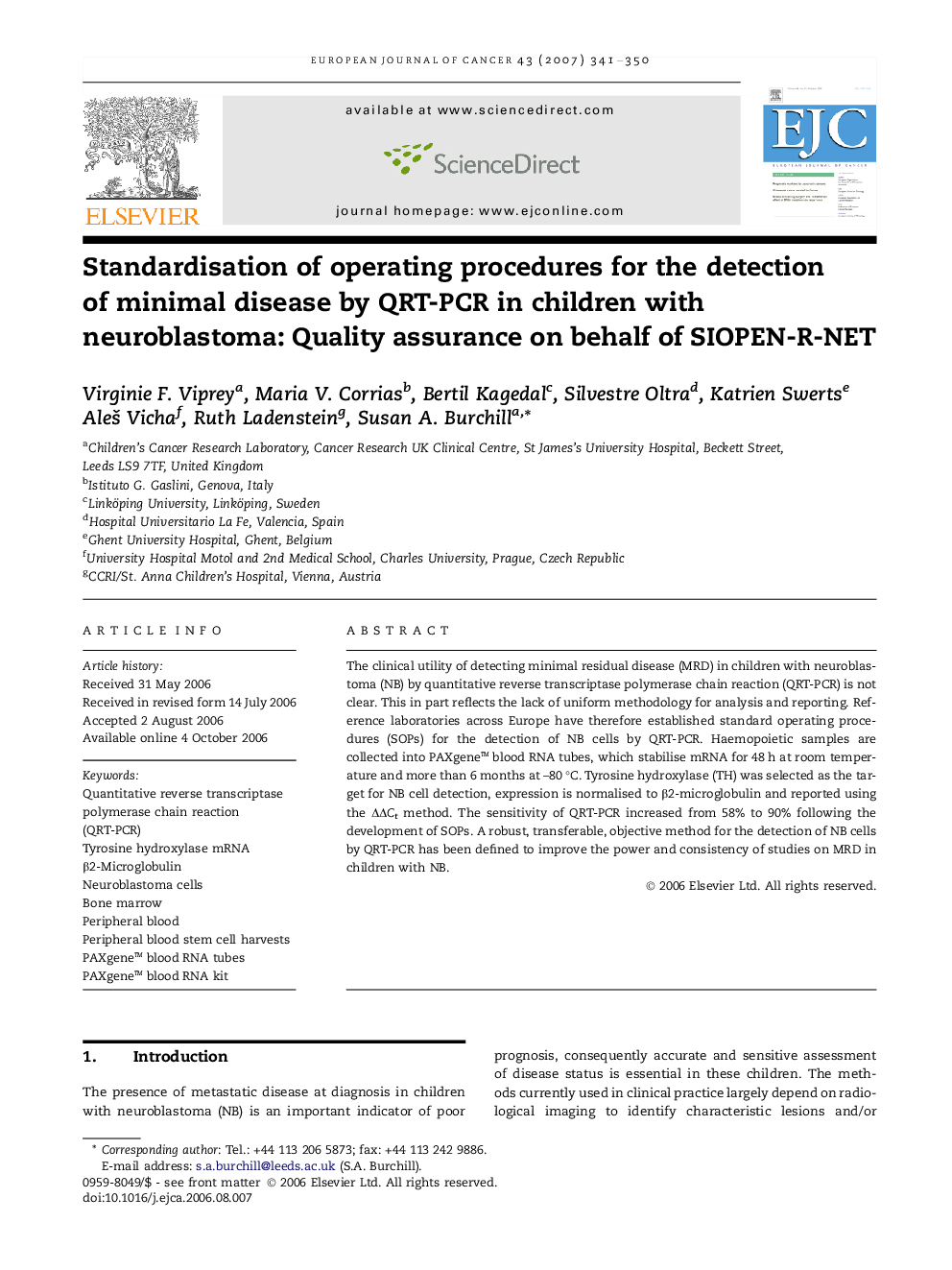| Article ID | Journal | Published Year | Pages | File Type |
|---|---|---|---|---|
| 2126254 | European Journal of Cancer | 2007 | 10 Pages |
The clinical utility of detecting minimal residual disease (MRD) in children with neuroblastoma (NB) by quantitative reverse transcriptase polymerase chain reaction (QRT-PCR) is not clear. This in part reflects the lack of uniform methodology for analysis and reporting. Reference laboratories across Europe have therefore established standard operating procedures (SOPs) for the detection of NB cells by QRT-PCR. Haemopoietic samples are collected into PAXgene™ blood RNA tubes, which stabilise mRNA for 48 h at room temperature and more than 6 months at –80 °C. Tyrosine hydroxylase (TH) was selected as the target for NB cell detection, expression is normalised to β2-microglobulin and reported using the ΔΔCt method. The sensitivity of QRT-PCR increased from 58% to 90% following the development of SOPs. A robust, transferable, objective method for the detection of NB cells by QRT-PCR has been defined to improve the power and consistency of studies on MRD in children with NB.
